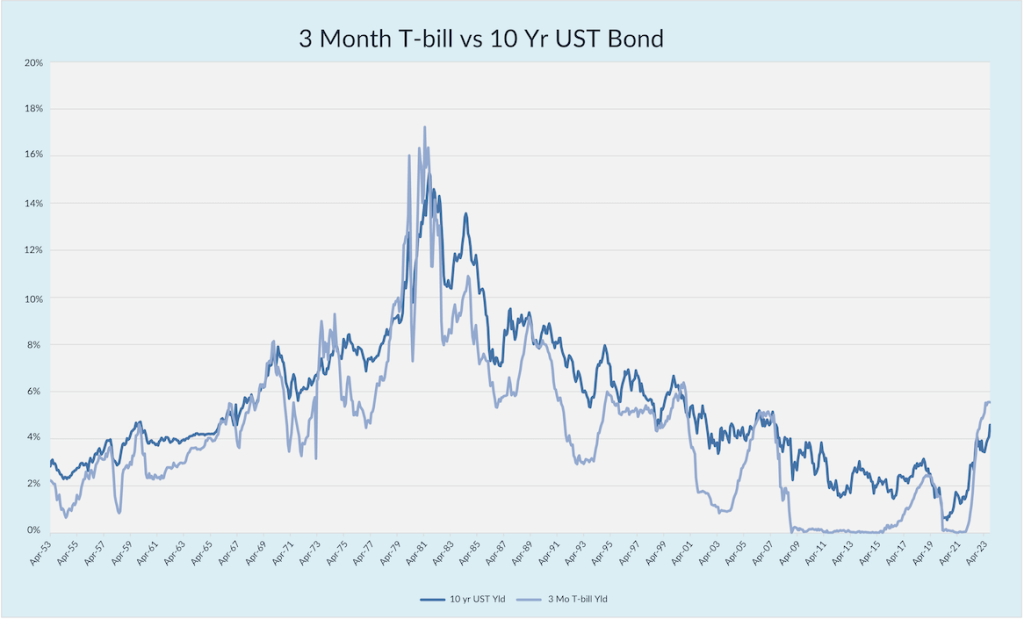Bonds. Treasury Bonds.
Bond duration is the measure used to determine the volatility of a bond or bond portfolio. Duration measures the price sensitivity of a particular bond or portfolio of bonds to a change in interest rates. For example, a 10-year bond with a bullet maturity in 10 years (bullet maturity means the bond pays back 100% of its principal on the maturity date) has a duration of roughly 8.5 years. This means that if interest rates rise by 1% (100 basis points), the price of that bond would decline by 8.5%. Conversely, if interest rates fall, the price of the bond will rise by the same amount. In the current environment where short-term interest rates have the highest yields along the yield curve, investors have been jumping into short-term bonds including T-bills and other short maturity fixed income securities. While this trade has worked well for the past 18 months – little price volatility and rising interest rates, once the FOMC moves from fighting inflation to supporting economic growth, owning longer dated bonds will produce a better return both from sustained higher yields and price appreciation.
Bond Investing 101:
A History Lesson
During the late 1970s, when “Volcker Fed” was fighting the highest inflation this country had experienced in its history, rates on short-term US Treasuries (0-1 Year maturities) reached 20%. At that time the yield on 30-year US Treasury bonds was approximately 14%.
The FRED (Federal Reserve Database):

In response to the inversion of the yield curve, many investors flocked to short-term treasuries to capture the 20% yields while ignoring the 30-year treasury bonds that were yielding over 14%. The next decade proved the folly of “chasing yields.” When inflation broke and the FOMC began lowering the Federal Funds rate, investors holding treasury bills watched those 20% yields decline to 6-8% while someone holding treasury bonds with 14% coupons not only continued to collect the 14% coupon, but they also saw the price of those bonds increase over 50%. Over the ensuing decade, an investor who purchased the longer duration bonds experienced a return well in excess of the return on treasury bills as well as US equities, which experienced one of the strongest bull markets in history.
Stirred, Not Shaken:
Where We Go From Here
Members of the FOMC have repeatedly stated that they do not believe the inflation fight is over and they still have work to do to bring the rate of inflation back to its 2% target, ensuring that inflation expectations are contained. While the Feds rhetoric remains hawkish, the recent price/yield behavior of the bond markets suggests investors believe the next moves by policymakers may be to reduce the overnight funds rate. If we are approaching terminal rates, investors will experience the best bond market returns by moving out of short-term instruments into intermediate and long-duration bonds.
Trajan Wealth has two fixed-income strategies that have durations in the 3–7-year range. The Trajan Short Duration portfolio has a duration of between 3 and 4 years, while the Opportunistic Fixed Income portfolio has a duration in the 7-year range. Both strategies are focused on high-quality corporate bonds and government-guaranteed debt. In addition, both strategies have performance histories that meet or exceed their benchmarks over short and long-term investment periods. We feel that this is a good time to begin moving short-term funds into either the Short Duration and/or the Opportunistic Fixed Income strategies to capture the additional return from those longer-dated securities that will happen when rates begin to decline.


